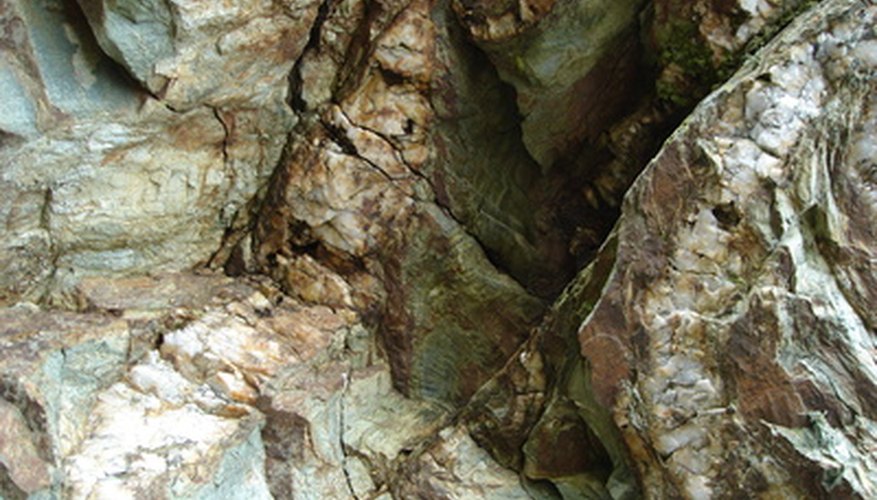You can identify limestone by examining the rock to observe its level of hardness and porous texture. Identifying limestone can help someone who searches for fossils, as many fossil imprints and fossilised remains embed in limestone. Builders use limestone as a source of lime for mixing cements. People who enjoy exploring caves should search for a location with a significant amount of limestone formations.
- You can identify limestone by examining the rock to observe its level of hardness and porous texture.
Place the rock in a dish.
Pour some vinegar on it. If the rock is part of a rock formation, use an eyedropper to apply some vinegar to it.
Watch to see if the vinegar fizzles. If the rock is a limestone rock, you will see bubbles where you applied the vinegar and hear popping sounds. Mineralised water, similar to vinegar, dissolves limestone. This is how caves form. Mineralised water, over thousands of years, poured through limestone deposits, widening pore spaces until the spaces widened into caves.
- Watch to see if the vinegar fizzles.
- Mineralised water, similar to vinegar, dissolves limestone.
Obtain an implement made of steel, such as a knife or coin.
Scratch the rock with the implement.
Observe the scratch. If the scratch leaves an imprint, it is likely the rock is limestone. Many fossils embed in limestone because the limestone's soft texture allows easy accumulation of animal or plant debris, which forms a fossil.
Add 120ml of 20 per cent hydrochloric acid to 800ml of tap water. Ensure you add the hydrochloric acid to the tap water and not the other way around.
Drip some of the solution on the rock.
Observe the rock. If you see fizzles and bubbles, the rock is likely limestone.
- If the scratch leaves an imprint, it is likely the rock is limestone.
- If you see fizzles and bubbles, the rock is likely limestone.
